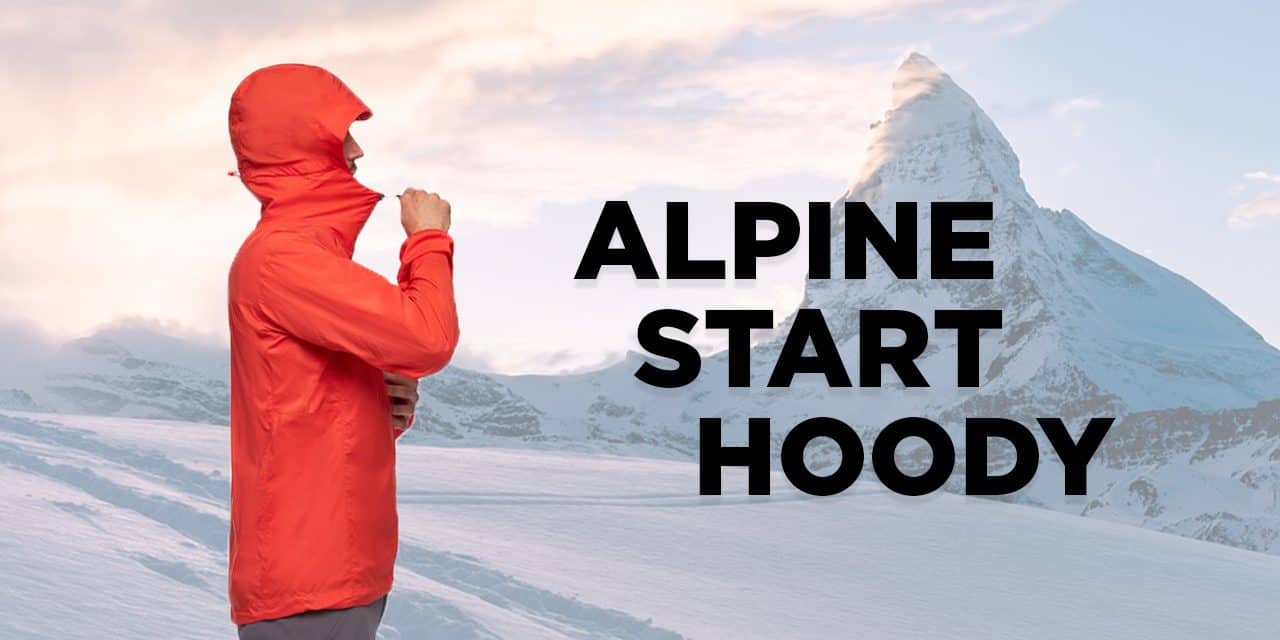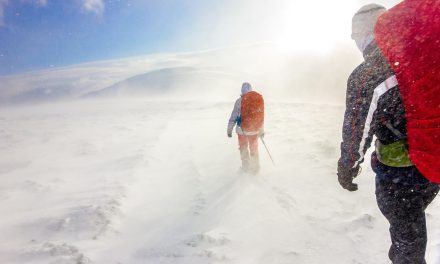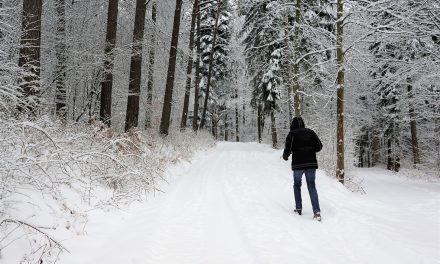A wind jacket is a critical piece of gear if you’re looking to take your adventures into remote locales. The Black Diamond Alpine Start Hoody is an award-winning option that’s popular among climbers and backpackers, alike, but how does it actually perform in the real world?
Up next, I’ll give you the low down on this tried and tested wind jacket. I’ve spent years using the Black Diamond Alpine Start on trips around the world, so here’s everything you need to know to decide if it’s right for your needs.
Overview
Designed with light and fast mountain adventures in mind, the Black Diamond Alpine Start is a go-to layer when it’s windy or drizzling in the mountains. It features a soft-to-the-touch water-resistant softshell fabric and a highly packable design that’s light enough to take on nearly any adventure.
Pros
- Highly breathable Schoeller fabric
- Great water-resistance
- Excellent wind-resistance in the mountains
- Fully adjustable helmet-compatible hood
- Very durable for such a thin fabric
- Packs into its own chest pocket for portability
Cons
- Narrow hem isn’t ideal for people with wider hips
- Cuffs are fairly tight for folks with larger forearms
- Somewhat dangly when clipped onto the back of a harness
- A few ounces heavier than the competition
Who This Jacket Is For
The Black Diamond Alpine Start is designed for anyone that needs a light, packable layer for windy conditions in the outdoors. It offers a decent amount of water-resistance and sun protection, making it perfect for anything from a glacial mountaineering trip to a late-season ski tour.
Performance
I bought one of the very first Black Diamond Alpine Start jackets when it hit the market over half a decade ago. Since that time, I’ve owned 3 versions of it, each better than the last.
These jackets have gone with me on nearly every trip I’ve ever been on since they debuted, so I’ve gotten plenty of opportunities to judge it in the mountains, on the ocean, and everywhere in between.
Up next, I’ll walk you through everything you need to know – the good, the bad, and the ugly – to help you decide if this is the right windbreaker for your needs.
Weight
The Alpine Start tips the scales at 7.4oz (210g), which is minuscule by rain jacket standards and modest in the world of windbreakers. For most people, this is more than light enough to toss into their pack without thinking twice.
However, if you’re into counting grams, it’s worth noting that the Alpine Start is heavier than most of its competition. For comparison’s sake, here are the weights of some of the other top wind jackets on the market:
- Patagonia Alpine Houdini: 6.9oz (195.6g)
- Cotopaxi Teca Half-Zip: 5oz (141.7g)
- Arc’teryx Squamish Hoody: 5.5oz (155.9g)
As you can see, the Alpine Start is a full 2.4oz (68g) heavier than its lightest competition. But, unless you’re an ultralight thru-hiker, you probably won’t actually notice this difference.
Technically speaking, it’s a bit on the heavier side for an ultralight windbreaker, but it’s still more than reasonable for light and fast missions in the mountains. I’ve never noticed the 0.5oz (14.2g) difference between the Alpine Start and my Patagonia Houdini when testing them both on extended expeditions.
Packed Size

Although the Alpine Start is a bit heavier than its competition, it’s still highly packable. The entire jacket packs into its own chest pocket. For reference, it’s about 4″ x 4″ (10.2 x 10.2cm) in size when packed up in its pocket stuff sack.
When packed, it has a small nylon carabiner clip loop, which is perfect for attaching it to a climbing harness while on multi-pitch routes. That being said, like most wind jackets, the Alpine Start does dangle quite a bit on your harness. So, I’ve generally found it’s easier to stuff it into my climbing pack than to attach it to my harness on longer routes.
Due to its small packed size, the Alpine Start also fits well inside the brain/floating lid of most backpacks. It’s so small that I’ve even managed to stuff it into the thigh pockets of my hiking pants and into a 1L bum bag on short day hikes.
Durability
I’ve owned 3 generations of the Alpine Start, including the very first model, and I’ve been impressed with the durability of each one. For a jacket that’s made from such a thin fabric, it’s held up incredibly well, even during some rugged bushwacks.
But, like all good things, at some point, each of these jackets has ripped. I managed to put a small tear in my first Alpine Start after just one climbing trip. Though, to be fair, the rocks were pretty sharp, so I would’ve been surprised if it didn’t rip.
After 4 more years of use, this original jacket didn’t get a single additional tear in it until I completely shredded it apart on some branches during a particularly heinous bushwack.
So, while I can’t say that the Alpine Start is completely tear-resistant, it does hold up surprisingly well in regular conditions. Additionally, small tears in this jacket are easy enough to repair with Tenacious Tape, which is awesome for extended expeditions.
Thus, this jacket still gets my seal of approval in terms of durability in the mountains.
Fit & Comfort
The Alpine Start has a fairly slim-fitting design, which helps to save weight in your pack. That being said, its stretchy Schoeller fabric and underarm gussets still allow for ample range of motion while climbing or hiking.
It features a helmet-compatible hood, which is perfect for climbing applications. While the first-generation version of the Alpine Start didn’t have a halo-style drawcord in the hood, I’m happy to say that the current model does. This allows you to more finely adjust the fit of the hood when wearing it over a helmet so that it doesn’t fly off your head in the wind as you climb.
Fit Considerations
One area where this jacket fails to impress in terms of fit is around the cuffs. If you’re like me and you like to pull up the sleeves of your jacket on warm days or while climbing, the Alpine Start’s narrow cuffs can be a bit annoying.
Although I wouldn’t say that I have particularly large forearms, the jacket’s cuffs barely make halfway up my forearms before I start to feel like I’m losing circulation in my fingers. Despite being advertised as having “stretch cuffs,” these cuffs barely expand more than a few millimeters.
Is this a reason not to choose the Alpine Start? Not at all. But, it is something to consider, especially if you have larger forearms.
The other thing of note when it comes to fit on this jacket is the narrowness of the hem. Having tried this jacket both in men’s and women’s models, I’ve found that both styles have somewhat narrow-waisted hems.
If you have narrow hips, then this isn’t much of a problem, especially since it comes with an elastic adjustment system to tighten things up. But, for folks with wider hips, the Alpine Start can feel quite constraining when hiking.
Weather-Resistance
As a wind jacket, the Alpine Start is not meant to be waterproof. So, if you’re looking for a lightweight rain jacket, this is not a good option.
In terms of water-resistance, this jacket’s Schoeller stretch-woven nylon softshell does a stellar job. During light drizzles, it holds up perfectly well and dries out surprisingly quickly.
Of course, in a downpour, the Alpine Start will quickly soak through, however, this is to be expected. When compared to the very similar Patagonia Houdini, both options seemed just as water-resistant.
With windy conditions, the Alpine Start truly holds its own, cutting the wind seamlessly, without the need for a bulky hardshell jacket. During sailing trips and remote climbing adventures, it made a substantial difference in my overall warmth.
Another area where this jacket works well is in terms of its ability to block out the sun’s harmful rays. Although doesn’t technically have a UPF rating, it does offer an impressive amount of protection on sunny days. Countless times, during super sunny days in the mountains while wearing this jacket, my arms were the only part of my body that didn’t get sunburnt – a true testament to the versatility of the Alpine Start.
Breathability

The Black Diamond Alpine Start’s breathability is truly second to none. Its Schoeller fabric leaves all the other ripstop nylon jackets in the dust in terms of how well it breaths on hot, sunny days.
Additionally, it wicks moisture and sweat like no other wind jacket I’ve ever worn. Instead of feeling clammy and like you’re wearing a garbage bag, this jacket breathes as well as a cotton t-shirt on a cool autumn day.
The only time I’ve ever felt like this jacket wasn’t exceptionally breathable is in the temperate rainforest of Alaska. But, when the relative humidity is approaching 80% and you’re in the rainforest, nothing feels breathable – even Schoeller’s super breathable fabric.
The Verdict
If you couldn’t tell, I’m a fan of this jacket. The Black Diamond Alpine Start has been one of my favorite pieces of gear for years and I rarely travel anywhere without it.
Does that mean it doesn’t have its flaws?
Not at all. I’m not a fan of its narrow hem or cuffs and I do think it’s a bit annoying to carry on the back of a climbing harness (but what isn’t?).
When weighing the pros and cons of this jacket, the pros clearly come out on top. Sure, it’s by no means an affordable jacket. But, in terms of overall quality, performance, and value, it’s hard to beat.
- Tint Colors Explained For Polarized Sunglasses - November 19, 2022
- Top 4 Best Portable Camping Showers of 2022 - November 19, 2022
- How to Choose Water Shoes & What to Look For - November 18, 2022






